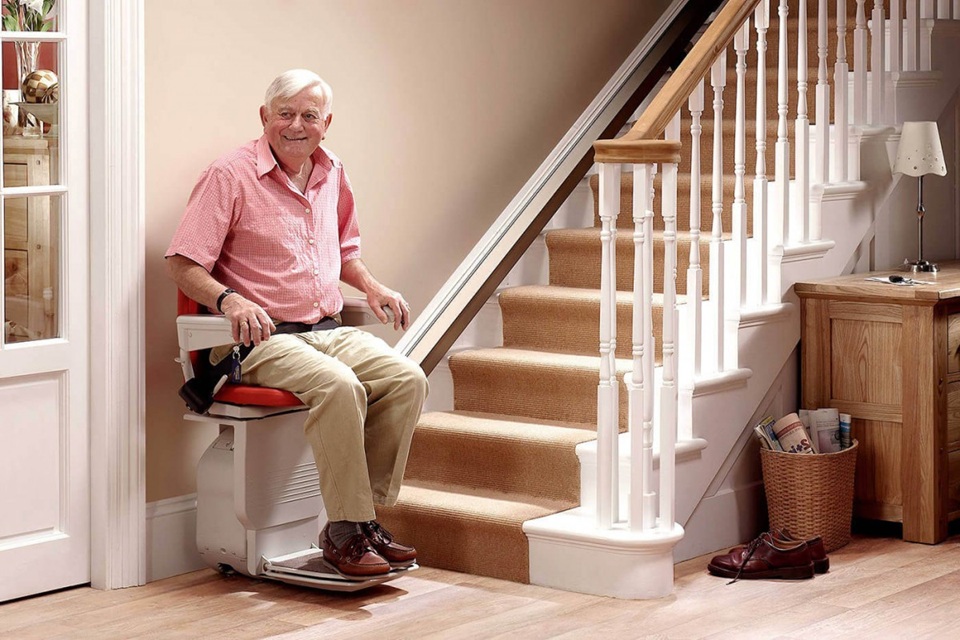Reclaiming Freedom: How Stairlifts Transform Lives in Multigenerational Homes
The gentle revolution of a chair lift for elderly residents represents far more than a mechanical solution to physical limitation—it embodies our collective response to the question of how we honour dignity and autonomy in our later years. These carefully engineered pathways between floors have quietly transformed countless homes across Singapore, challenging our assumptions about ageing, independence, and the architecture of care.
The Geography of Ageing in Place
Our homes contain geographies as real and significant as any mountain range or river system—territories rendered inaccessible by changing physical capabilities. Staircases, once simply architectural transitions, become borders between accessible and inaccessible domains when mobility diminishes. The emotional weight of this reality manifests in countless small surrenders: bedrooms relocated to ground floors, daily routines reimagined, spaces once intimately known now viewed from a distance.
“When we install a stairlift, we’re not merely solving a mobility challenge—we’re restoring access to spaces filled with memory and meaning,” observes a veteran Singapore mobility specialist who has facilitated hundreds of installations in multigenerational homes.
The significance of reclaiming these domestic territories cannot be overstated. The ability to move freely throughout one’s home represents not merely physical autonomy but psychological wholeness—the preservation of identity through continued access to personal space.
Beyond the Binary of Staying or Leaving
Reframing the Conversation
The discourse around eldercare often presents false binaries: independence versus dependence, ageing in place versus institutional care. This reductive framing obscures the rich middle ground where thoughtful adaptations create new possibilities for dignified living.
The chair lift represents precisely this kind of thoughtful adaptation—neither a complete solution to the complexities of ageing nor a mere stopgap, but rather a significant reconfiguration of possibility within existing domestic spaces.
The benefits extend beyond the immediate practical application:
- Reduction of fall risk on stairs, addressing a primary cause of injury among older adults
- Preservation of energy for meaningful activities rather than difficult navigation
- Maintenance of connection to all areas of the home, including spaces with significant emotional attachments
- Reduced anxiety about safety, both for the user and family members
- Extended timeline for comfortable ageing in place, delaying or eliminating the need for relocation
“The psychological impact of maintaining independence often outweighs even the physical benefits,” notes a prominent advocate for elderly wellness in Singapore’s ageing communities.
The Human Algorithm: Beyond Technical Installation
Personalisation as Principle
Each installation represents not merely a technical challenge but a deeply human one. The most thoughtful providers understand this essential truth, approaching each home as a unique ecosystem with specific needs, limitations, and possibilities.
The best solutions emerge from careful listening—understanding not just the physical requirements but the daily rhythms, preferences, and priorities of those who will use the system. Does the user prefer to transfer on a particular side? Are there timing considerations around bathroom access? How might the system accommodate multiple users with different needs?
“When we truly understand that we’re not installing equipment but rather crafting a solution for human flourishing, everything about our approach transforms,” reflects a specialist with over two decades of experience in Singapore’s mobility sector.
The Aesthetic Dimension
The assumption that assistive technology must surrender beauty for function represents another false binary in our thinking. Contemporary chair lift systems demonstrate remarkable attention to aesthetic integration, with customisation options that complement rather than contradict existing interior design elements.
This aesthetic consideration matters profoundly, particularly in Singapore’s context where multigenerational homes often balance traditional sensibilities with contemporary design. A thoughtfully chosen system becomes not an institutional intrusion but an elegant addition to the home environment.
Beyond Individual Homes: The Policy Landscape
Singapore’s approach to population ageing has evolved significantly, with enhanced subsidies and support systems making mobility solutions increasingly accessible. The Enhancement for Active Seniors (EASE) programme represents one such pathway, offering significant financial support for home modifications including stairlift installations.
These policy frameworks acknowledge a fundamental truth: supporting ageing in place through thoughtful home adaptation represents not merely compassionate policy but fiscal wisdom. The cost of institutional care far exceeds that of home modification, creating a rare alignment between humanitarian and economic imperatives.
The Cultural Dimension: Filial Piety Reimagined
In Singapore’s context, the decision to install a chair lift often intersects with deeply held cultural values around filial responsibility and care for elders. Rather than representing a technological intrusion into traditional caregiving, thoughtfully implemented mobility solutions can be understood as modern expressions of these enduring values—creating environments where dignity and respect find concrete expression.
“We’re seeing families reframe these installations not as concessions to limitation but as expressions of respect and care—tangible demonstrations of the desire to maintain parental dignity,” notes an observer of changing attitudes toward eldercare in Singapore’s diverse communities.
The Horizon View: Integration and Innovation
As smart home technology evolves, the integration of mobility solutions with broader home automation systems creates new possibilities for seamless support. Voice activation, programmable routines, and safety monitoring represent the leading edge of a rapidly evolving technological landscape.
Yet amidst this technological evolution, what remains constant is the human imperative at the heart of these solutions: the creation of environments where ageing unfolds with dignity, where independence is preserved through thoughtful adaptation, and where homes remain fully accessible regardless of changing physical capabilities. In this context, the thoughtful installation of a chair lift for elderly residents represents not merely a technical solution but a profound act of care.




